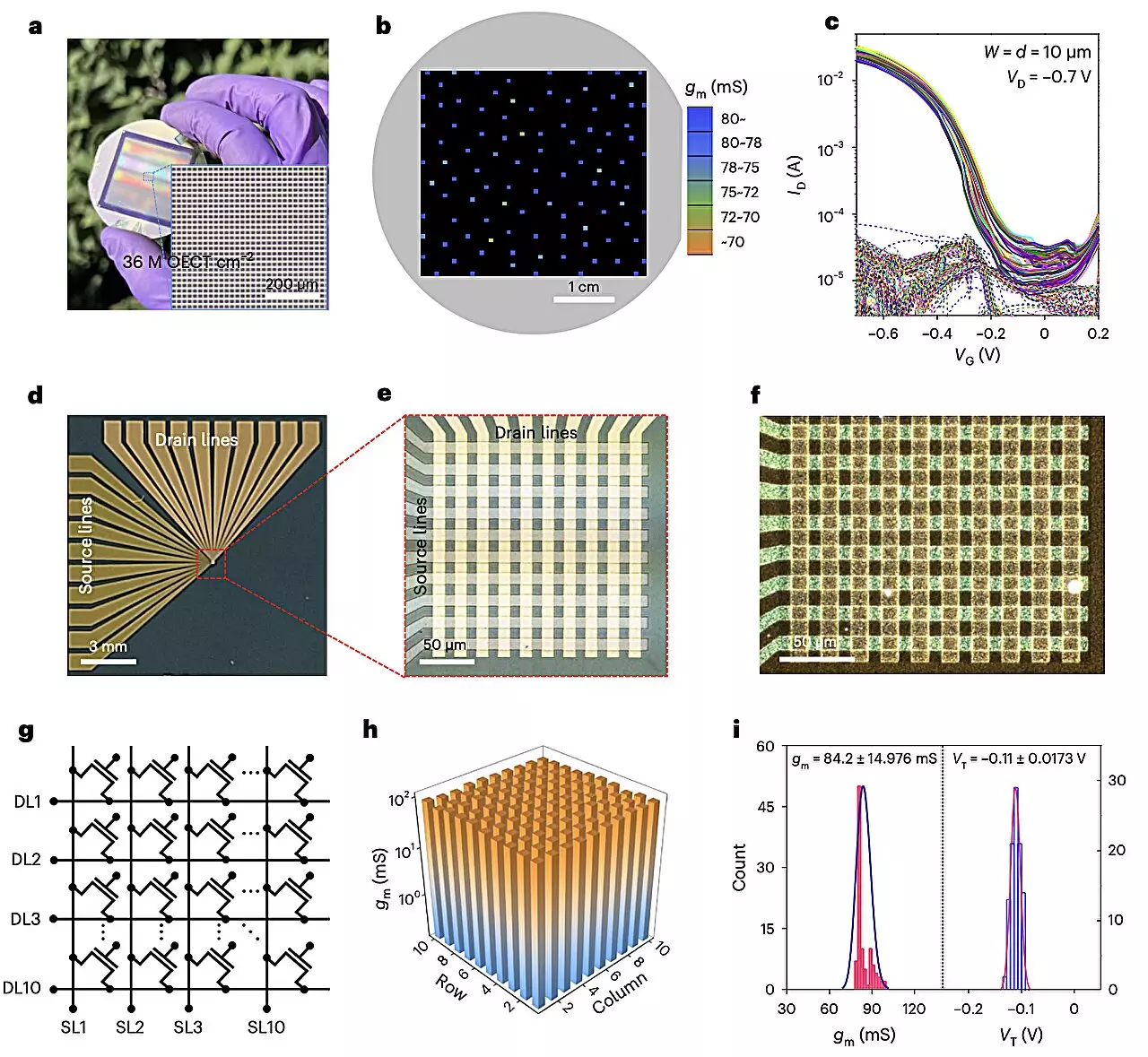Organic electrochemical transistors (OECTs) have garnered significant attention in recent years for their potential in various applications such as biosensors, wearable devices, and neuromorphic systems. These transistors are based on organic superconducting materials and are known for their ability to modulate electrical current in response to small changes in the voltage applied to their gate electrode. While OECTs offer promising amplification and sensing capabilities, researchers have identified several limitations that hinder their performance, including limited stability and slow redox processes.
A recent study conducted by researchers at Northwestern University introduced a novel strategy for fabricating high-density and mechanically flexible OECTs. The researchers utilized electron beam lithography (eBL) to micropattern both p- and n-channel organic semiconductor films, allowing them to create high-density vertical OECT arrays and circuits. This approach eliminated the need for masks or chemical solvents that could potentially damage the materials, resulting in ultra-small, high-density patterns with well-defined conducting channel regions.
The fabricated OECT arrays exhibited impressive transconductances ranging from 0.08 to 1.7 S, transient times of less than 100 μs, and stable switching properties exceeding 100,000 cycles. Additionally, the researchers successfully demonstrated the potential of their fabrication strategy by creating vertically stacked logic circuits, including NOT, NAND, and NOR gates, which showed excellent operational stability. This study opens up new possibilities for enhancing the stability and performance of OECT circuits, paving the way for their integration into electronic devices.
The new e-beam exposure strategy introduced by Kim, Pankow, and their colleagues has the potential to revolutionize the fabrication of OECTs, making scalable production more achievable. By enabling the integration of OECT structures into arrays and circuits with high density and mechanical flexibility, this innovative approach could significantly impact the field of organic electronics. Moving forward, further research and development in this area could lead to the creation of advanced brain-inspired and wearable technologies that leverage the unique capabilities of OECTs.
The development of high-density and mechanically flexible OECTs through electron beam lithography represents a significant advancement in the field of organic electronics. The findings of the study conducted by researchers at Northwestern University highlight the potential of this new fabrication strategy to address existing limitations and propel the integration of OECTs into various electronic devices. As technology continues to evolve, innovations like these are essential for unlocking the full potential of organic transistors and driving forward the next generation of electronic technologies.


Leave a Reply